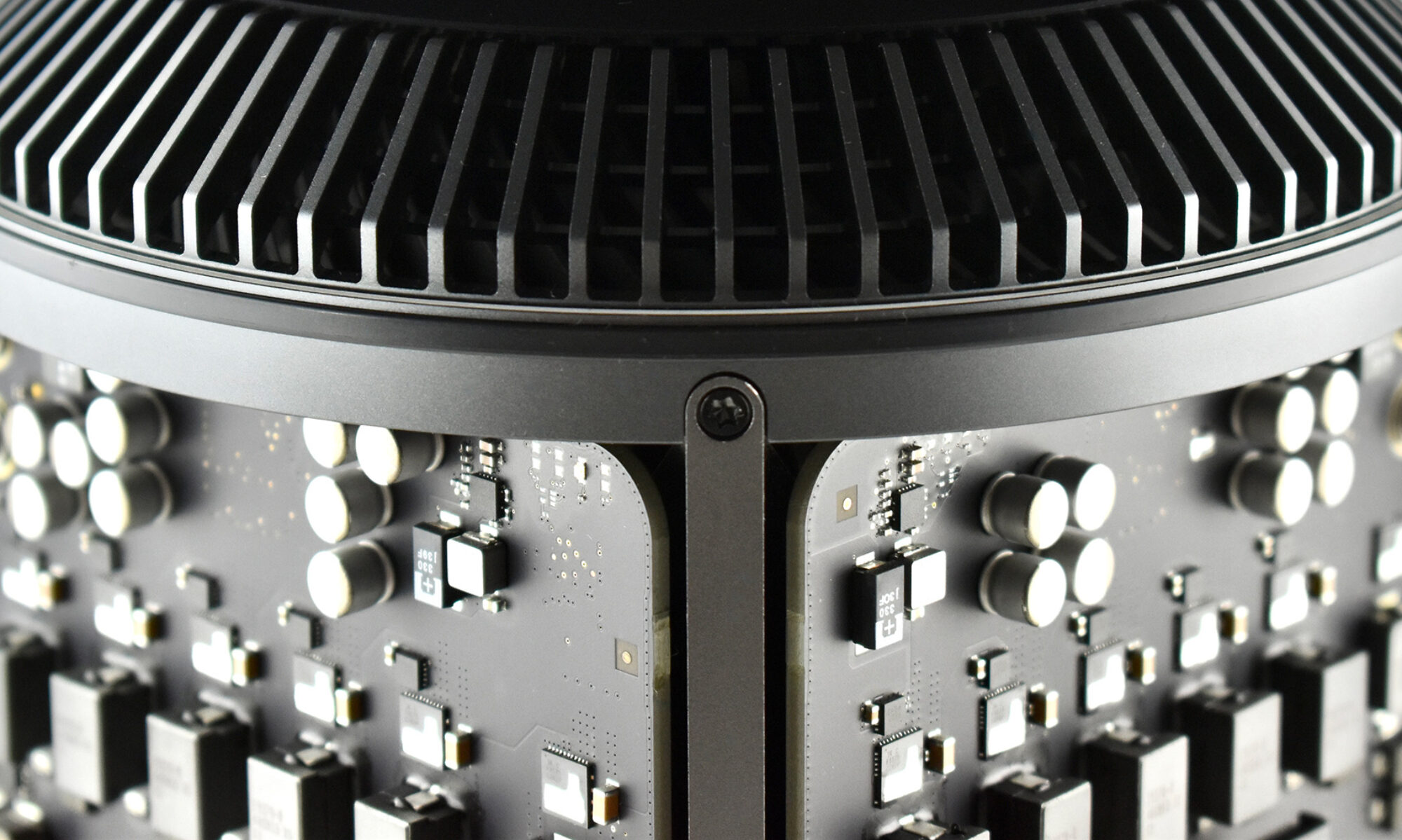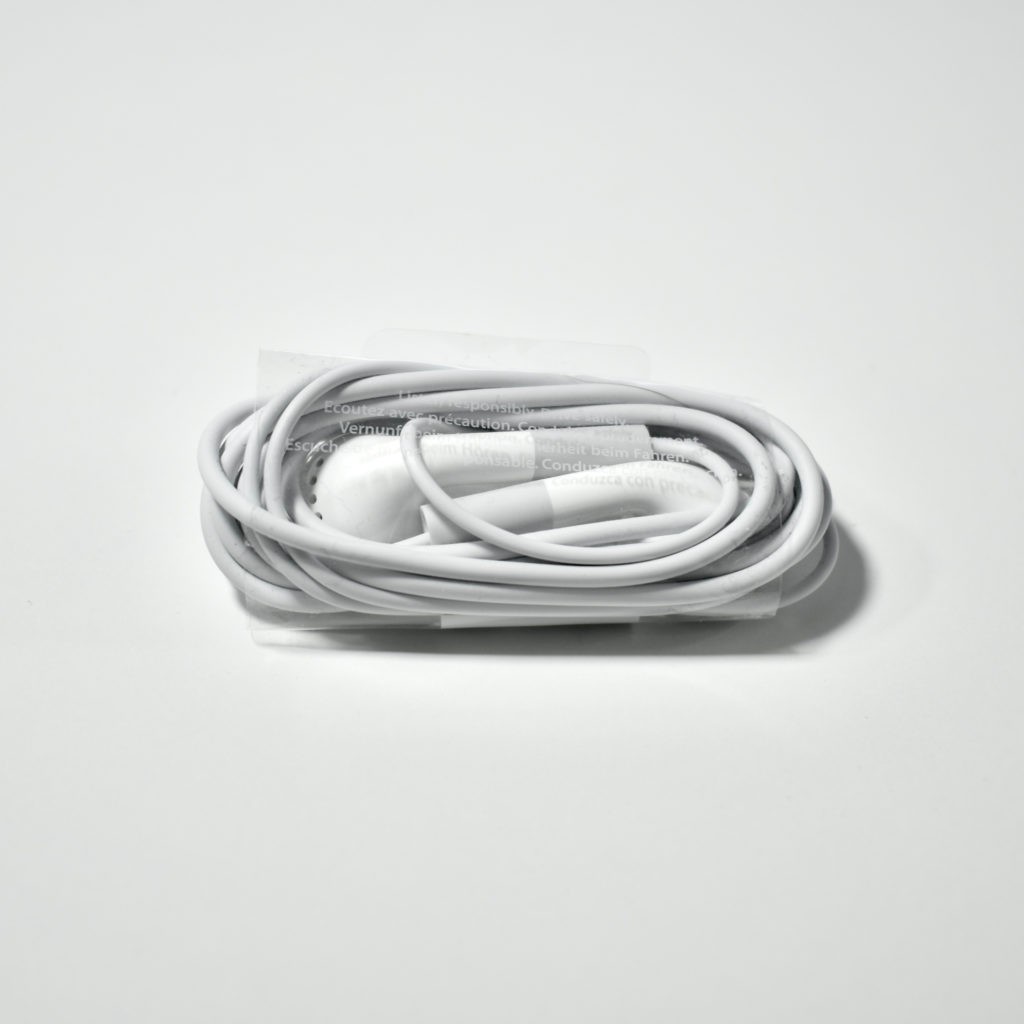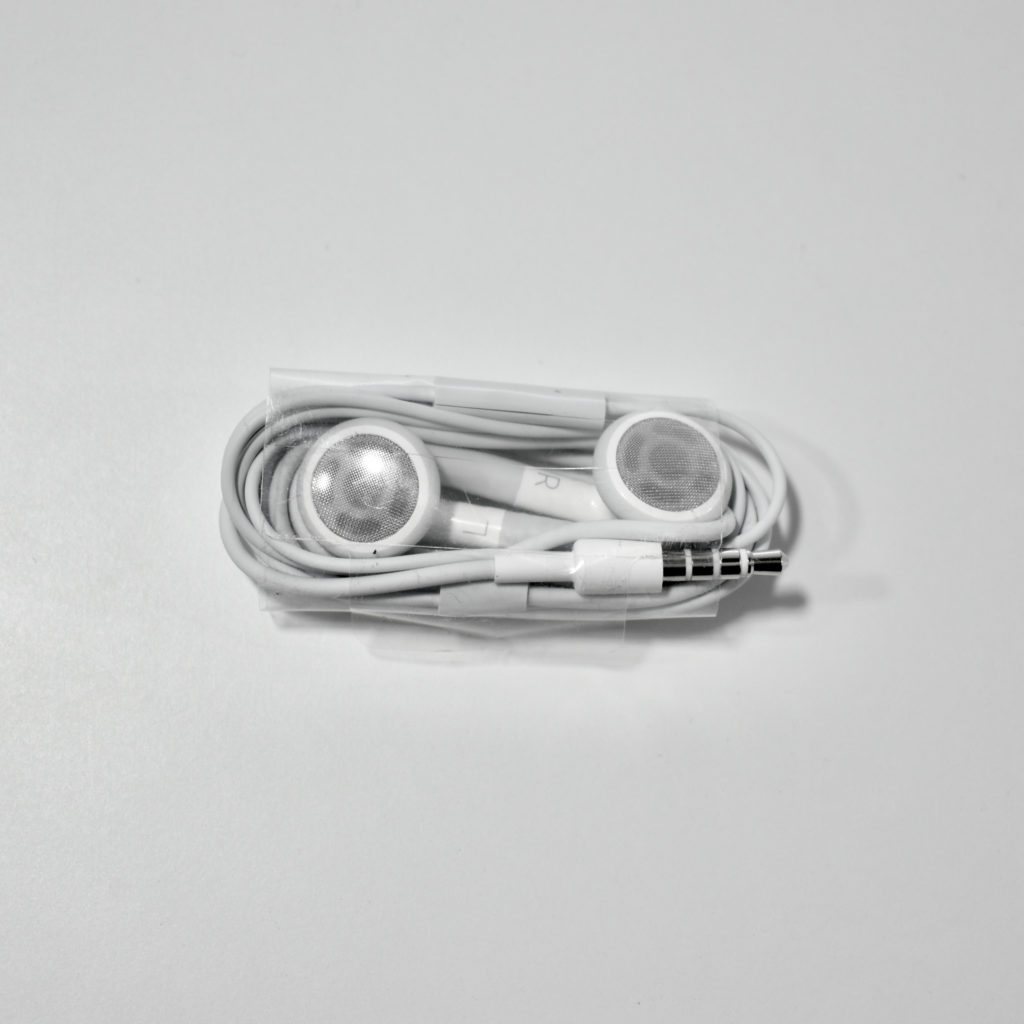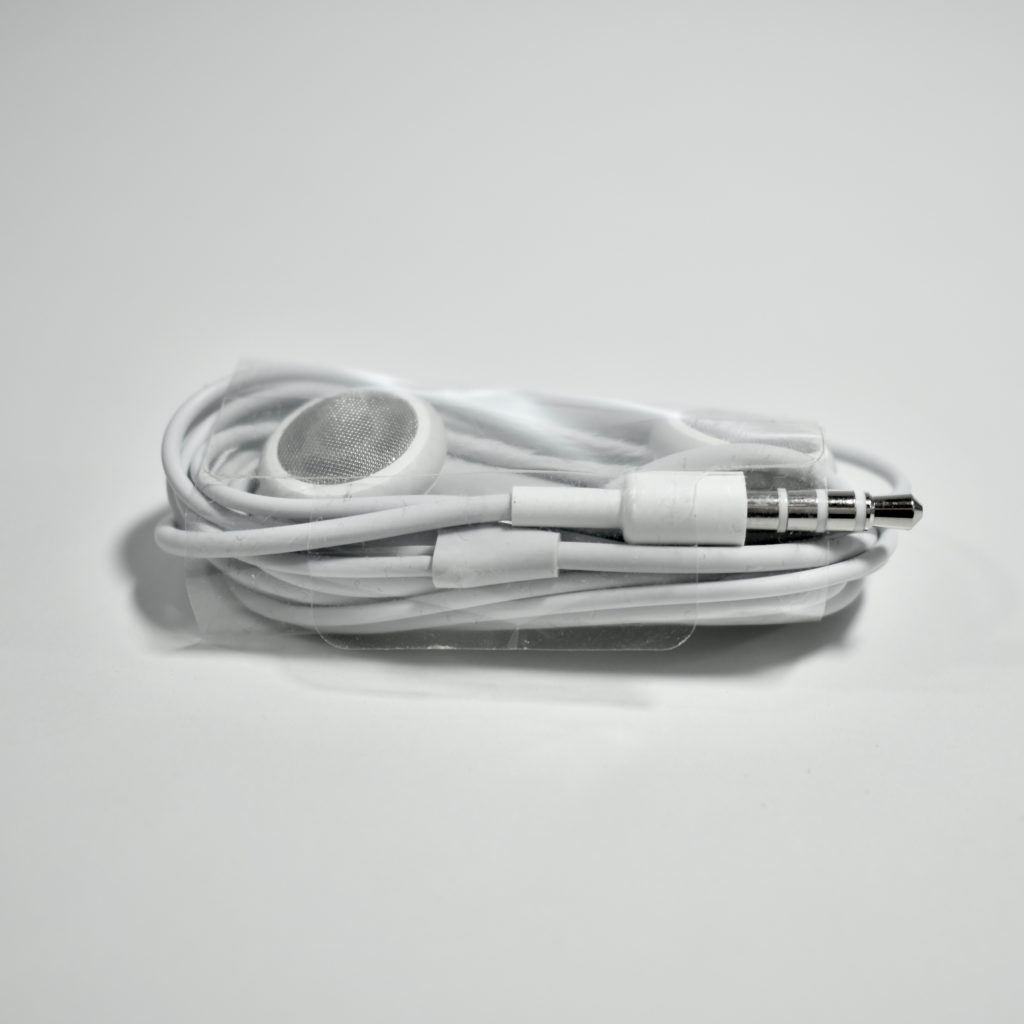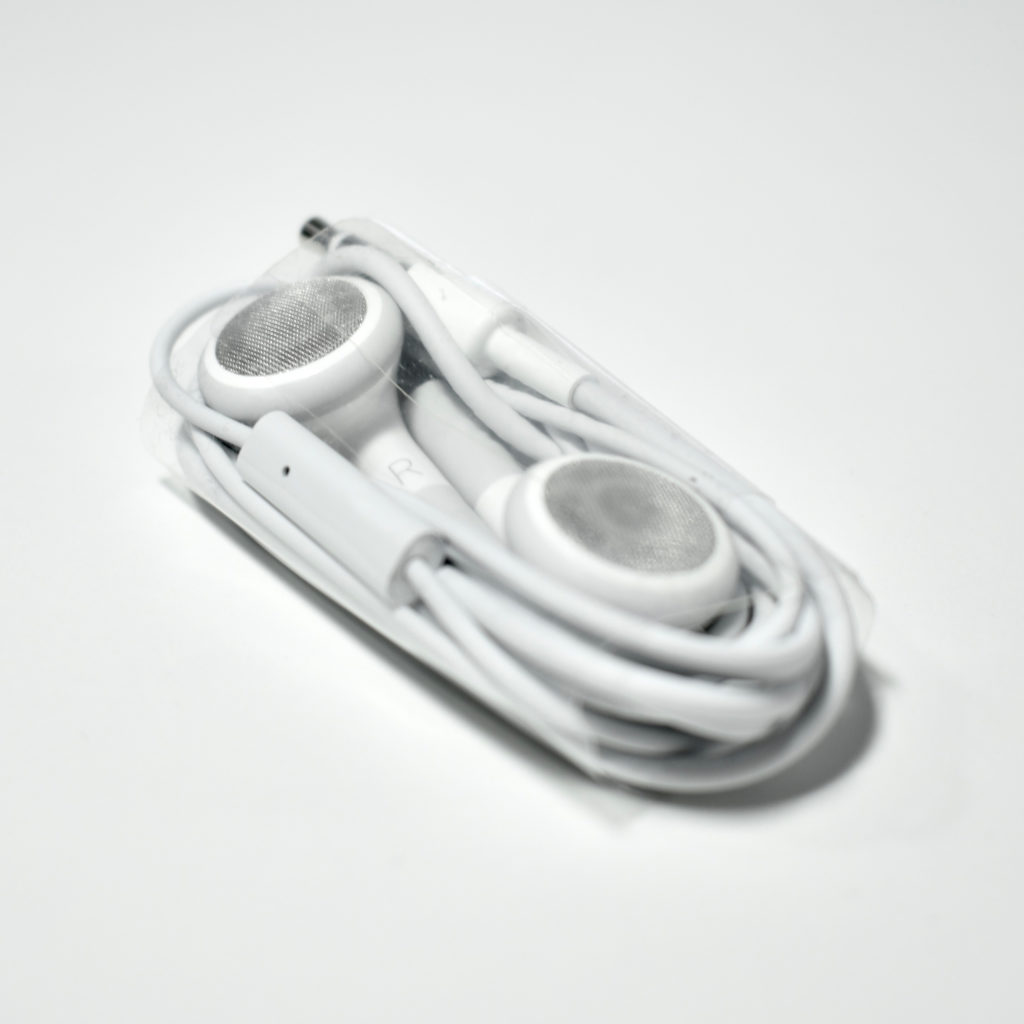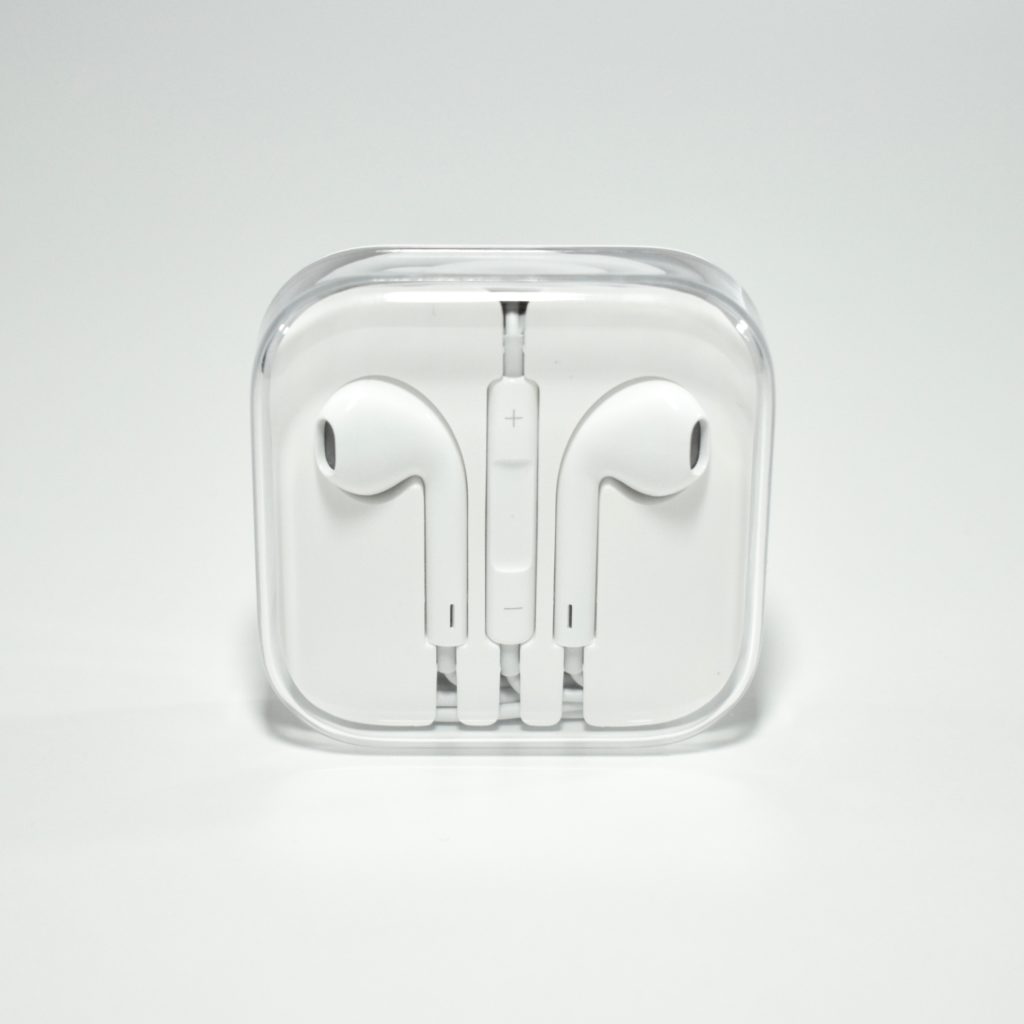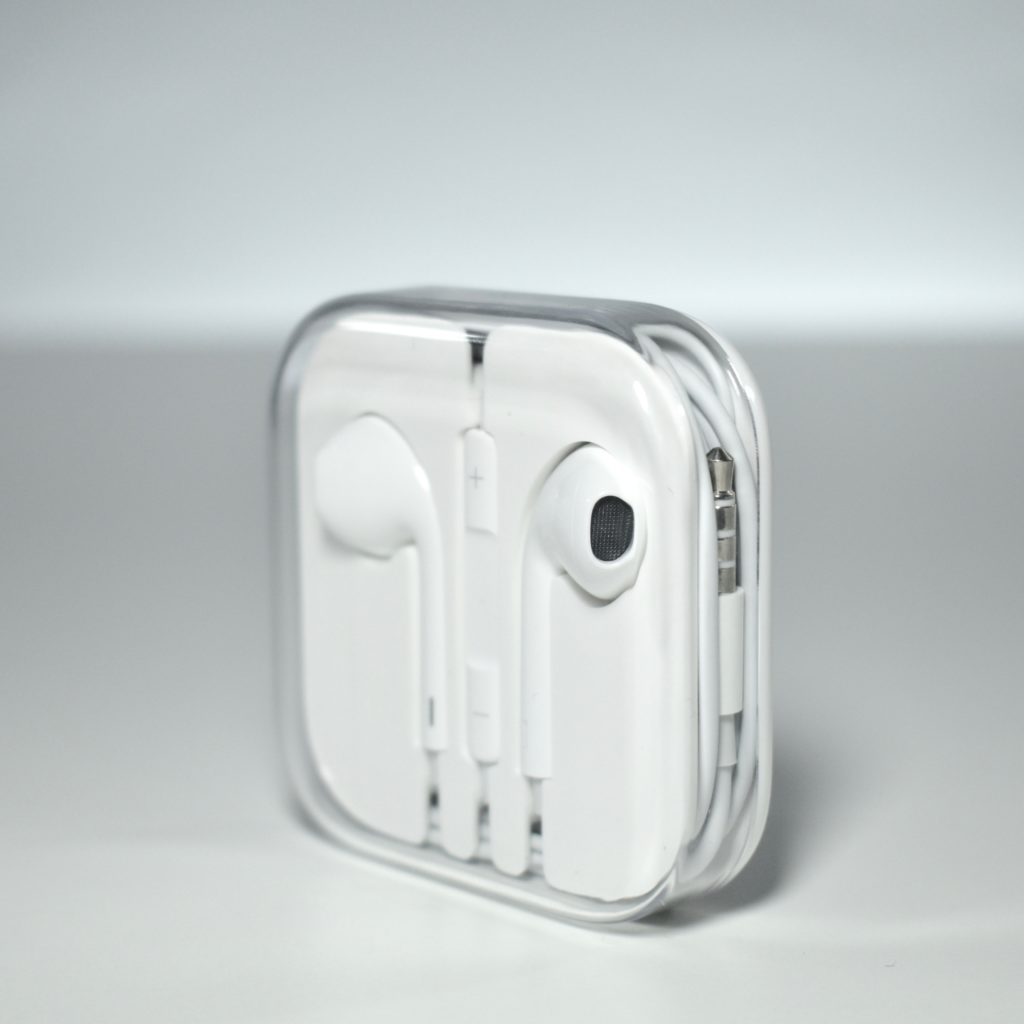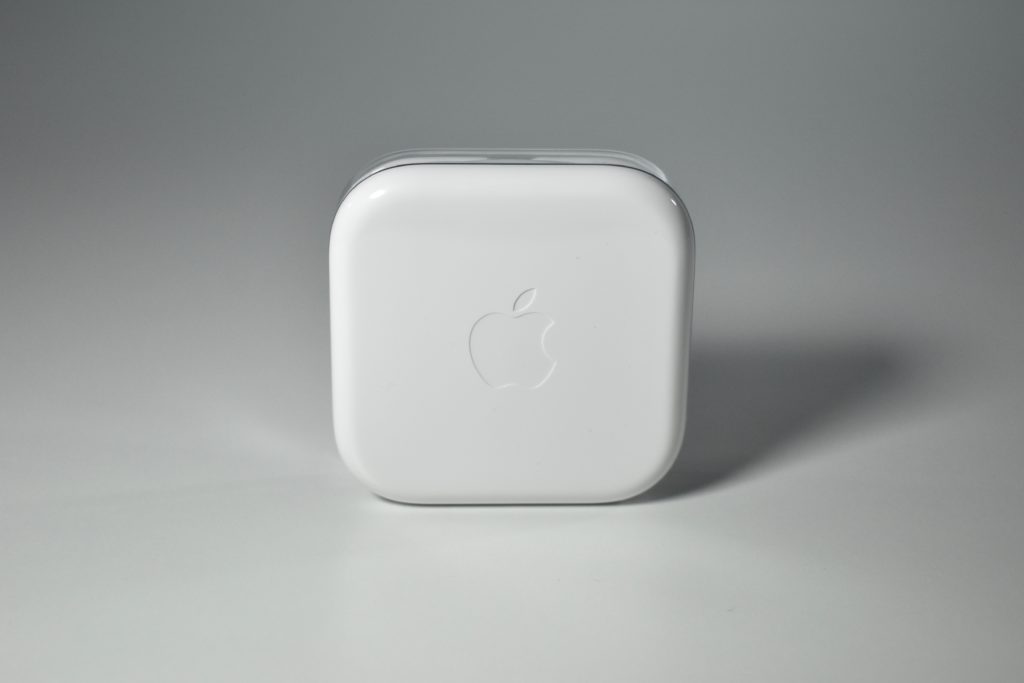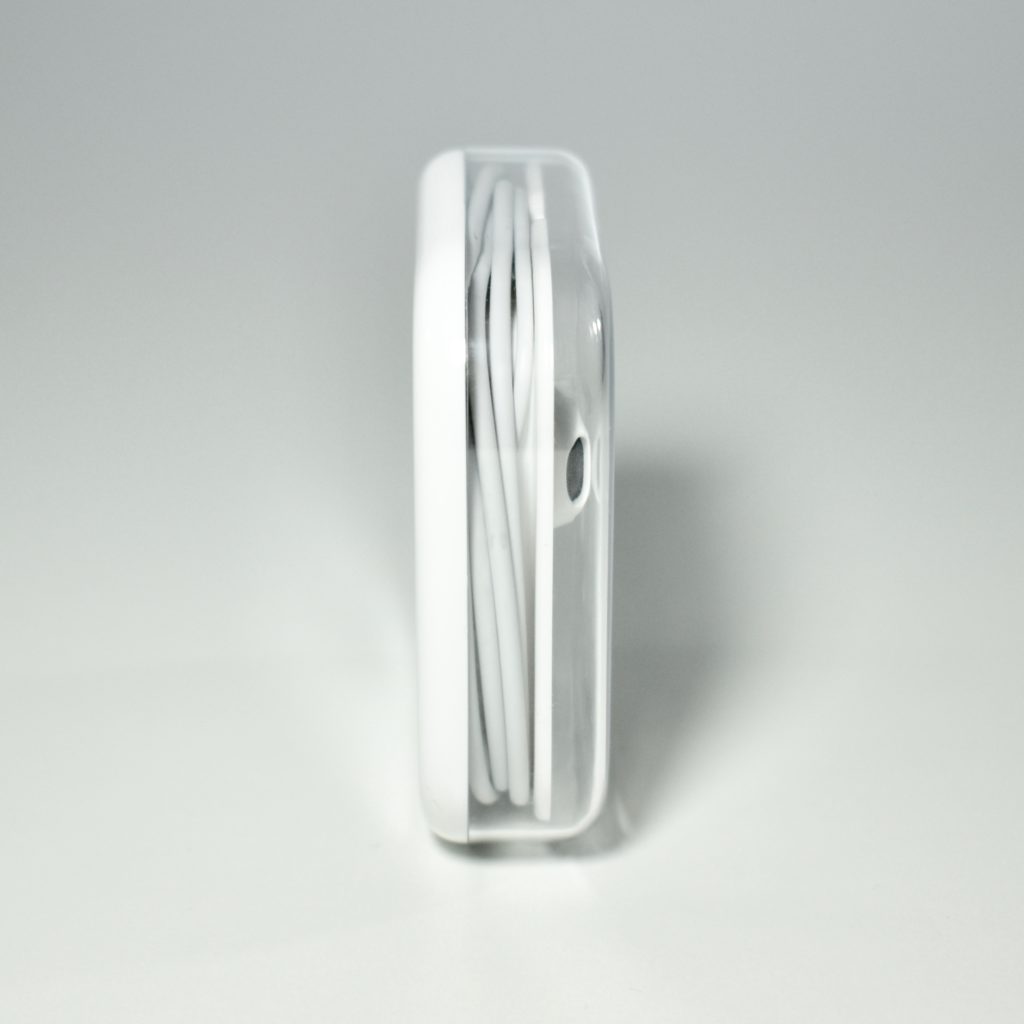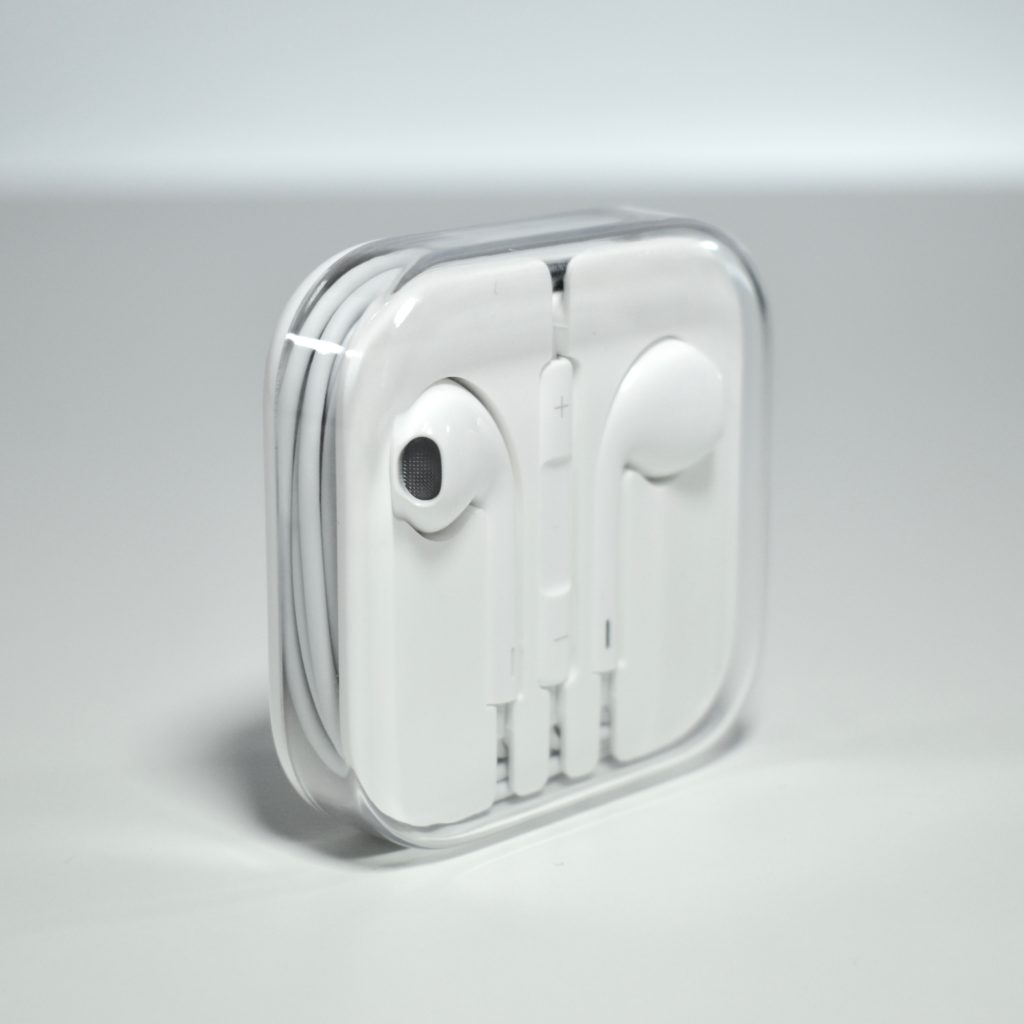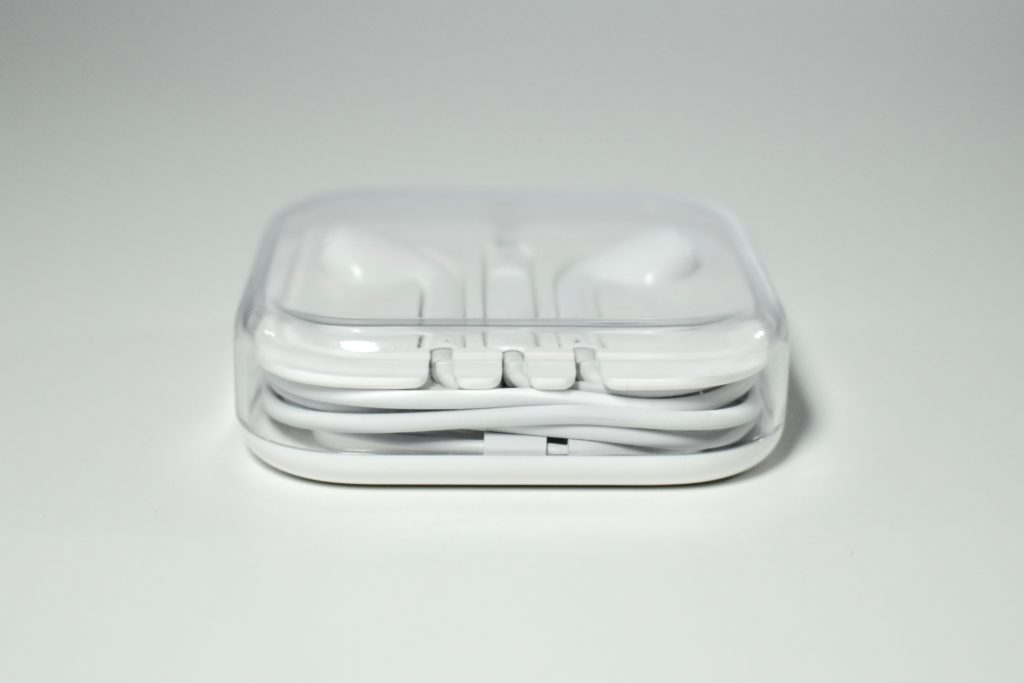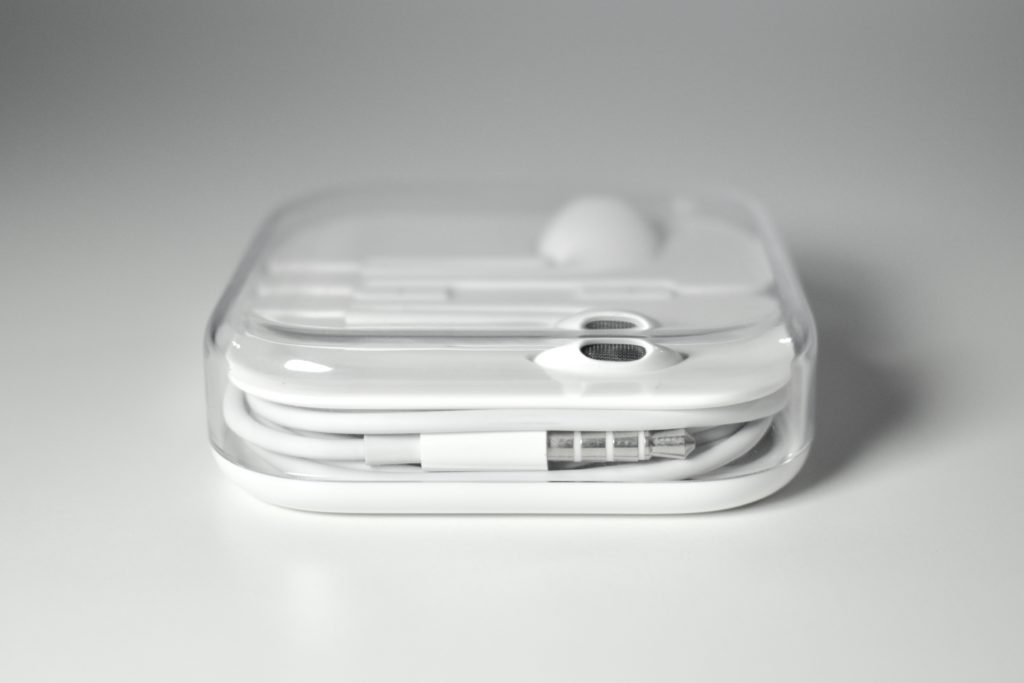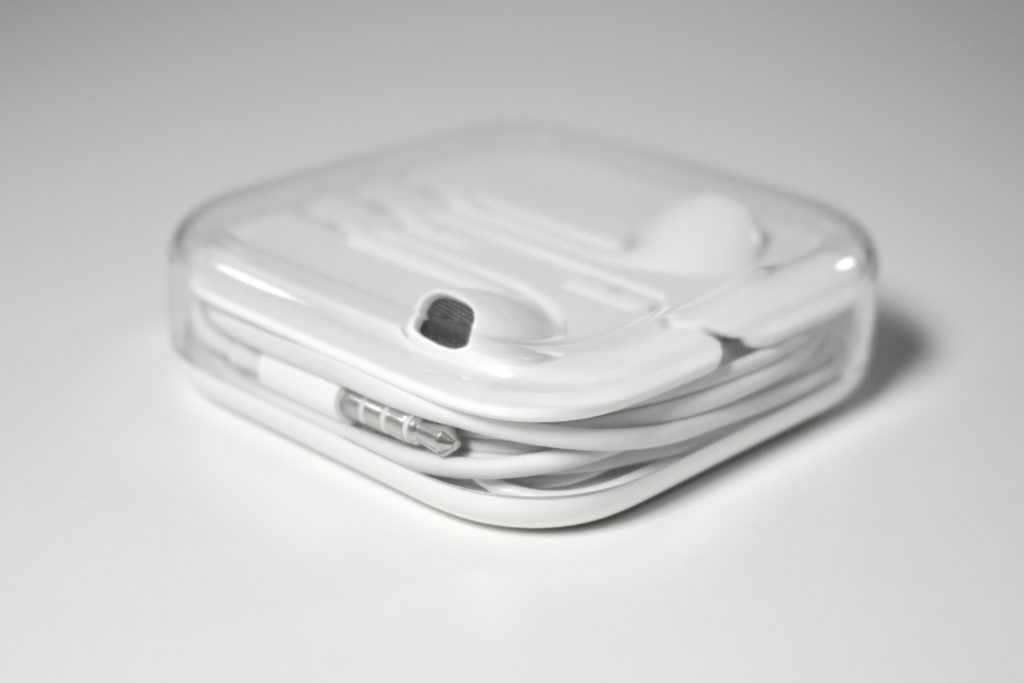The iPhone Stereo Headset were the headphones that shipped with the first two iPhone models, the original iPhone (2007–2008) and the iPhone 3G (2008–2010). The headphones used a similar enclosed design as the later EarPods, and the right earbud included a control button with a microphone on the wire. The button is controlled by a squeeze and it can be set for a variety of tasks: answer/end calls, advance presentation slides, play/pause music/video, or capture photos. A double-press also allowed the user to skip to the next music track.
Note that the controller did not include the + and – option for volume and/or other controls, a feature now taken for granted in many headphone designs.
iLounge described these headphones as, “familiar and inexpensive, with very good earbud and microphone quality.” They also praised the bass response, warm sound, and the quality of the microphone.
This example is in Apple’s bulk packaging. I remember receiving the headphones when I attended an Apple Education professional development opportunity that required attendees to have a microphone. These were never unpackaged because I had brought and used my personal headphones.
